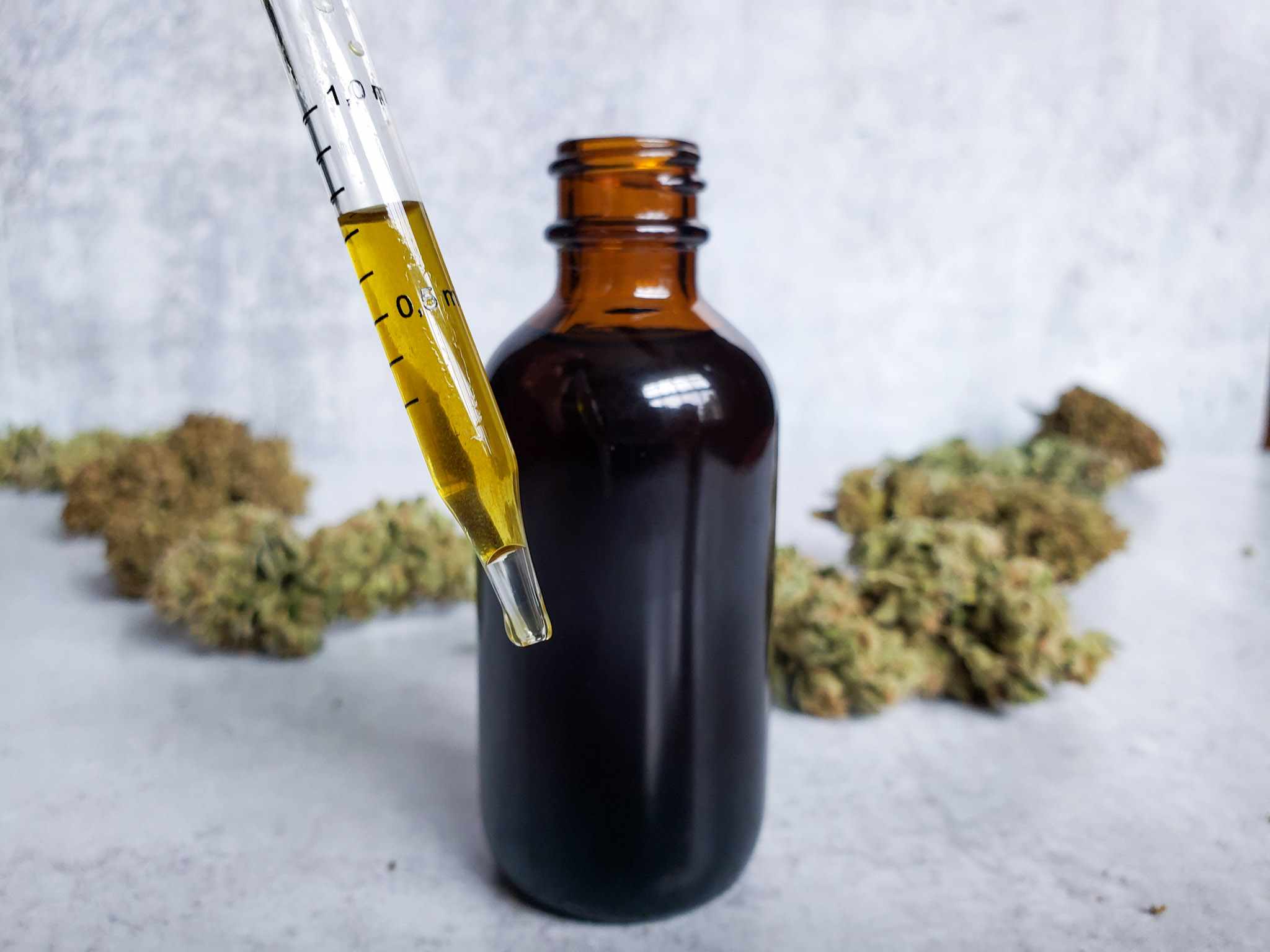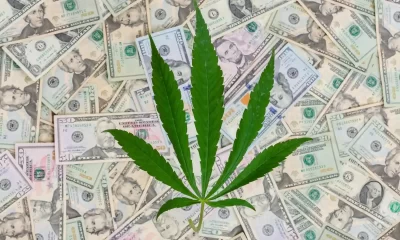Lifestyle
The DIY CBD Tincture Recipe That You Can Make at Home

The use of herbal tinctures for its therapeutic benefits has been around for many centuries.
In fact, experts estimate that tinctures have been used since the 12th to 17th centuries primarily for teaching medicine. Tinctures are essentially highly concentrated extracts of herbs that are made by soaking up medicinal herbs in oil, alcohol, or vegetable glycerin. Even cannabis indica tinctures could be purchased in pharmacies until the 1920’s, though the use of tinctures declined when pharmacology began using pills to treat illnesses.
However, the use of tinctures are on the rise once again. More people are becoming aware of the benefits of using natural and herbal tinctures, making them a wonderful way to medicate with a variety of herbs especially when one doesn’t have the luxury of time.
Cannabis tinctures are no different. Even though there are numerous ways you can consume marijuana for its medicinal benefits, consuming through tinctures by placing it underneath your tongue has proven to be one of the quickest ways to absorb cannabinoids, terpenes, and other therapeutic compounds in the plant for quick relief. And since cannabidiol (CBD) doesn’t have any psychoactive properties, it has become the medicine of choice for millions of people around the world who need fast-acting and effective relief from a myriad of symptoms including pain, inflammation, insomnia, anxiety, epilepsy, Parkinson’s disease, and so much more.
There are other benefits to using CBD tinctures, aside from the fact that they are concentrated and fast acting – you only need a miniscule amount to feel its benefits. Additionally, CBD tinctures are low in calories and don’t contain other unwanted ingredients like preservatives and additives because they don’t need flavoring. They simply go underneath the tongue to work and don’t have to taste as flavorful as edibles.
Having said that, making your own CBD tinctures at home is so easy. It’s a wonderful way to have full control over all the ingredients that go into these tinctures so that you can medicate yourself and your family whenever needed.
What You’ll Need
Since hemp is federally legal all over the country, buying hemp is the first step to making CBD tinctures. The reason why we choose hemp plants over marijuana is because hemp contains much more CBD than marijuana. In addition, hemp contains under .3% THC, which means you won’t experience any high from it.
Making tinctures is easy, even if you’ve never done so before.
- ¼ ounce hemp flowers
- Parchment paper
- Baking sheet
- Glass jar with lid
- 190-proof Everclear alcohol, or a 200-proof food grade alcohol
- 1 oz. amber glass dropper bottle
- Mesh strainer
- Cheese cloth
- Bowl
*Note: you can also use oil instead of alcohol, and if you decide to use this method, be sure to use equal amounts of decarboxylated hemp to oil, such as 440g of flower to 500ml olive/MCT/coconut oil.
Process
- Grind the hemp flowers and carefully remove any seeds and stems if you find any.
- Preheat your oven to 250F to prepare the stash for decarboxylation, which is necessary in order to activate the CBD.
- Scatter the hemp flower on a baking sheet that has been lined with parchment paper.
- Roast the CBD flowers for 45 minutes, but check on it every 10 minutes or so and turn the flowers around to ensure uniform decarboxylation. The kind of finished texture you are looking for is when the hemp flower easily crumbles when held between your fingers. However, you can opt to decarb for longer, up to 2 hours, if you want even more potent CBD as well as terpene expression.
- Once done, let the hemp flowers cool for 15 minutes.
- Place the hemp flowers into the glass jar, and fill it up completely with the alcohol. Ideally, the hemp flowers should fill up around 2/3 of the jar.
- Seal the lid on tightly, shake it vigorously, then leave it in a cool, dark spot inside your house for 4 weeks. During this time, the alcohol will extract the therapeutic compounds from the hemp flower. Give the bottle a good shake 2-3 times a week while waiting for this process to complete.
- Once the cure time has finished, pour the tincture through a cheesecloth to separate the flower from the liquid.
- Pour the tincture into the glass jar with dropper, so that you can simply drop it underneath your tongue whenever needed.
When the tincture is not in use, always keep it in a cool, dry place to ensure a long shelf life.
Using CBD Tinctures
Now it’s time to try your CBD tinctures.
For first-time users, the advise is always to start low and go slow. Start by placing one drop underneath your tongue and observe how you feel for a day. Remember that tinctures are highly concentrated, so a little goes a very long way. You can expect to feel its effects in 2-5 minutes. First-time users should be a in a safe setting, such as your home, that does not require you to drive.
CBD tinctures are also extremely versatile. Aside from placing them underneath your tongue, these are also great vehicles for easily infusing foods and drinks. Have some fun with it by adding a drop or two into your coffee, juices, smoothies, or even into baked goods. You can even add a few drops into other marijuana products, or use this as a base to create your own topicals right at home.
Source: https://cannabis.net/blog/how-to/the-diy-cbd-tincture-recipe-that-you-can-make-at-home
Business
Alabama to make another attempt Dec. 1 to award medical cannabis licenses

Alabama regulators are targeting Dec. 1 to award the first batch of medical cannabis business licenses after the agency’s first two attempts were scrapped because of scoring errors and litigation.
The first licenses will be awarded to individual cultivators, delivery providers, processors, dispensaries and state testing labs, according to the Alabama Medical Cannabis Commission (AMCC).
Then, on Dec. 12, the AMCC will award licenses for vertically integrated operations, a designation set primarily for multistate operators.
Licenses are expected to be handed out 28 days after they have been awarded, so MMJ production could begin in early January, according to the Alabama Daily News.
That means MMJ products could be available for patients around early March, an AMCC spokesperson told the media outlet.
Regulators initially awarded 21 business licenses in June, only to void them after applicants alleged inconsistencies with how the applications were scored.
Then, in August, the state awarded 24 different licenses – 19 went to June recipients – only to reverse themselves again and scratch those licenses after spurned applicants filed lawsuits.
A state judge dismissed a lawsuit filed by Chicago-based MSO Verano Holdings Corp., but another lawsuit is pending.
Source: https://mjbizdaily.com/alabama-plans-to-award-medical-cannabis-licenses-dec-1/
Business
Pot Odor Does Not Justify Probable Cause for Vehicle Searches, Minnesota Court Affirms

The Minnesota Supreme Court affirmed that cannabis odor does not constitute probable cause to search a vehicle.
If Minnesota police search a vehicle solely based upon the smell of pot, they can’t justify searching a vehicle, even if there is evidence found of other alleged crimes. Even after appealing a lower court decision to suppress the evidence—twice—the Minnesota Supreme Court agreed, and the dismissal of his charges stands.
In a ruling filed regarding a case the State of Minnesota Court of Appeals on Sept. 13, the Minnesota Supreme Court affirmed that cannabis odor does not constitute probable cause to search a vehicle.
The case has been ongoing for two years. On July 5, 2021, just before 10 p.m., a Litchfield police officer stopped a car for an obscure local law: the light bar mounted on the vehicle’s grill had more auxiliary driving lights than are permitted under Minnesota law. The officer asked the driver, Adam Lloyd Torgerson, for his license and registration. Torgerson, his wife, and his child were present in the vehicle. The officer stated that he smelled pot and asked Torgerson if there was any reason for the odor, which he initially denied. But cops found a lot more than just pot.
A backup officer was called in. The couple denied possessing any pot, but Torgerson admitted to smoking weed in the past. The second officer stated that the weed odor gave them probable cause to search the vehicle and ordered them to exit the vehicle. The first officer searched the vehicle and found a film canister, three pipes, and a small plastic bag in the center console. The plastic bag contained a white powder and the film canister contained meth, which was confirmed in a field test.
Torgenson was charged with possession of meth pipe in the presence of a minor and fifth-degree possession of a controlled substance after the unwarranted search of Torgerson’s vehicle.
Police Aren’t Allowed to Do That, Multiple Courts Rule
But the search had one major problem—cops weren’t searching for a meth pipe. They only searched his car because they could smell pot, and the meth and paraphernalia were a surprise for everyone. Still, they had no grounds to search the vehicle. The man’s charges were later dismissed after the district court determined the odor of cannabis alone was insufficient basis for probable cause to search the vehicle, regardless of whatever other drug paraphernalia they found.
The state appealed the case, but the Minnesota Court of Appeals affirmed the district court’s decision. The case was appealed a second time, this time to the Minnesota Supreme Court, which agreed with the lower court’s ruling.
“This search was justified only by the odor of marijuana emanating from the vehicle,” the Minnesota Supreme Court decision reads. “Torgerson moved to suppress the evidence found during the search, arguing that the odor of marijuana, alone, is insufficient to create the requisite probable cause to search a vehicle under the automobile exception to the warrant requirement. The district court granted Torgerson’s motion, suppressed the evidence, and dismissed the complaint. The State appealed. The court of appeals affirmed the district court’s suppression order. Because we conclude that the odor of marijuana emanating from a vehicle, alone, is insufficient to create the requisite probable cause to search a vehicle under the automobile exception to the warrant requirement, we affirm.”
It amounts to basic human rights that apply—regardless of whether or not a person is addicted to drugs.
Other States do Precisely the Same Regarding Pot Odor as Probably Cause
An Illinois judge ruled in 2021 that the odor of cannabis is not sufficient grounds for police to search a vehicle without a warrant during a traffic stop.
Daniel J. Dalton, Associate Judge of the 14th Judicial Circuit, issued a ruling in response to a motion to suppress evidence in the case of Vincent Molina, a medical cannabis patient arrested for cannabis possession last year.
In that case, Molina was arrested despite the decriminalization of small amounts of cannabis in Illinois in 2019 with the passage of the Illinois Cannabis Regulation and Tax Act.
In some states, the issue of probable cause and cannabis was defined through bills.
Last April, the Maryland House of Delegates approved a bill that reduces the penalties for public cannabis consumption and bars police from using the odor of cannabis as the basis for the search of an individual or auto. Under Maryland’s House Bill 1071, law enforcement officers would be prohibited from using the odor of raw or burnt cannabis as probable cause to search a person or vehicle.
The rulings represent the rights of citizens when they are pulled over by police, even if there are hard drugs involved.
Business
Can Cannabis Help Seasonal Depression

Ultimately, seasonal affective disorder can set in as quickly and seamlessly as the fall foliage on the trees outside.
The weather and foliage on the trees aren’t the only things that are changing around this time of year. As the sun starts to set earlier and earlier, peoples moods can be affected by the decrease in sunlight. This is often known as seasonal affective disorder (SAD), and it can make the winter months miserable for lots of people. Can cannabis help seasonal depression?
Fortunately for those that do suffer from SAD, there are numerous remedies that can make this time of year more bearable. Exercise, vitamin supplements and even marijuana can have an enormous impact on fighting against the disorder. While there are resources for offsetting the disorder, getting a full understanding of the problem is paramount in being able to overcome it.

Seasonal Affective Disorder Symptoms
One of the most crucial steps in combating SAD is properly identifying its symptoms. Some of those symptoms include:
- Anxiety
- Social withdrawal
- Sleepiness and fatigue
- Weight gain
- Suicidal thoughts
- And several others
Those who are suffering from any of these symptoms should refrain from self-diagnosis and seek professional assistance. That professional assistance could lead to more resources to fight the disorder such as an antidepressant prescription.
How Common is Seasonal Affective Disorder?
In recent years, more and more people who suffer from seasonal affective disorder have begun opening up about their struggles. An estimated 10 million Americans are said to be currently dealing from SAD. Additional research shows women are four times more likely to be diagnosed with the disorder than men. SAD also appears to be more prevalent among people with pre-existing mental health conditions like bipolar disorder.
The number of people across the globe who suffer from seasonal depression is slightly lower than that of the United States. Only about 1-2% of the global population is said to suffer from seasonal depression while about 5% of the U.S population suffers from SAD.

How to Fight Seasonal Affective Disorder
There are a number of proven ways to offset some of the sadness that comes with the changing of the seasons. For example, cannabis contains cannabinoids that can have a positive impact on mood, while potentially increasing serotonin levels. When it comes to decreasing anxiety levels, that’s where CBD comes into play. By working with our body’s endocannabinoid system, CBD has been seen as instrumental in boosting dopamine levels.
Aside from cannabis, there are a handful of other at-home methods that can help alleviate the symptoms of seasonal affective disorder. Spending more time with friends, family and loved ones can be highly effective in offsetting some SAD symptoms. The same can be said for making an effort to get lots of sunlight and getting regular exercise.
Ultimately, seasonal affective disorder can set in as quickly and seamlessly as the fall foliage on the trees outside. Knowing that you aren’t alone, and having the best practices for fighting it, can make the fall and winter months better than you could have ever imagined.
Source: https://thefreshtoast.com/medical-marijuana/can-cannabis-help-seasonal-depression/
-

 Business2 years ago
Business2 years agoPot Odor Does Not Justify Probable Cause for Vehicle Searches, Minnesota Court Affirms
-

 Business2 years ago
Business2 years agoNew Mexico cannabis operator fined, loses license for alleged BioTrack fraud
-

 Business2 years ago
Business2 years agoAlabama to make another attempt Dec. 1 to award medical cannabis licenses
-

 Business2 years ago
Business2 years agoWashington State Pays Out $9.4 Million in Refunds Relating to Drug Convictions
-

 Business2 years ago
Business2 years agoMarijuana companies suing US attorney general in federal prohibition challenge
-

 Business2 years ago
Business2 years agoLegal Marijuana Handed A Nothing Burger From NY State
-

 Business2 years ago
Business2 years agoCan Cannabis Help Seasonal Depression
-

 Blogs2 years ago
Blogs2 years agoCannabis Art Is Flourishing On Etsy









